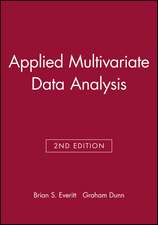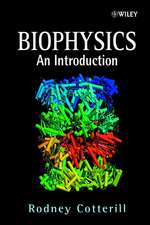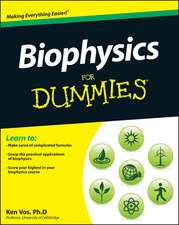Dynamics of Cell and Tissue Motion: Mathematics and Biosciences in Interaction
Editat de Wolfgang Alt, Andreas Deutsch, Graham Dunnen Limba Engleză Paperback – 16 oct 2012
Understanding the dynamics of cell and tissue motion forms an essential step in understanding the dynamics of life and biological self-organization. Biological motion is one of the most obvious expressions of self-organization, as it requires autonomous creation and regulated action of forces leading to shape formation and translocation of cells and tissues. The topics of the book include intracellular motility and cytoplasma dynamics (e.g. cell division), single cell movement in varying extracellular media (e.g. chemotaxis or contact guidance), cell aggregation and cooperative motion (e.g. cellular swarms or slugs) and, finally, cell-cell interactions in developing tissues (e.g. embryogenesis or plant movement). The dynamics underlying biological motion are explained, on the one hand, by various methods of image processing and correlation analysis, and on the other hand by using physico-chemical theories, developing corresponding mathematical models and performing continuum field or stochastic simulations. Thus, the study is of an interdisciplinary character typically found in theoretical and mathematical biology. Its presentation is intended to reach a broad audience a " from theoretically interested bioscientists, physicians and biophysicists to applied mathematicians interested in the application of nonlinear dynamical systems and simulation algorithms. The most important feature of the book is that it considers possible synergetic mechanisms of interaction and cooperation on different microscopic levels: on the molecular level of cytoskeletal polymers, membrane proteins and extracellular matrix filaments, as well as on the level of cells and cellular tissues. New results concern the aspects of filament or cell alignment, various modes of force transduction and the formation of global stress fields. The latter aspect of mechanical cell-cell communication is emphasized in order to complement the much more well-studied phenomena of chemical, genetical or electrophysical communication.
| Toate formatele și edițiile | Preț | Express |
|---|---|---|
| Paperback (1) | 391.61 lei 6-8 săpt. | |
| Birkhäuser Basel – 16 oct 2012 | 391.61 lei 6-8 săpt. | |
| Hardback (1) | 587.50 lei 6-8 săpt. | |
| Springer – 17 noi 1997 | 587.50 lei 6-8 săpt. |
Preț: 391.61 lei
Nou
74.94€ • 80.13$ • 62.48£
Carte tipărită la comandă
Livrare economică 17 aprilie-01 mai
Specificații
ISBN-10: 3034898266
Pagini: 356
Ilustrații: XVI, 336 p.
Dimensiuni: 155 x 235 x 19 mm
Greutate: 0.5 kg
Ediția:Softcover reprint of the original 1st ed. 1997
Editura: Birkhäuser Basel
Colecția Birkhäuser
Seria Mathematics and Biosciences in Interaction
Locul publicării:Basel, Switzerland
Public țintă
ResearchCuprins
Descriere
An interdisciplinary study explaining the dynamics underlying biological motion – one of the most obvious expressions of self-organization. Designed for a broad audience from bioscientists to applied mathematicians, this book considers possible synergetic mechanisms of interaction and cooperation on different microscopic levels.



















